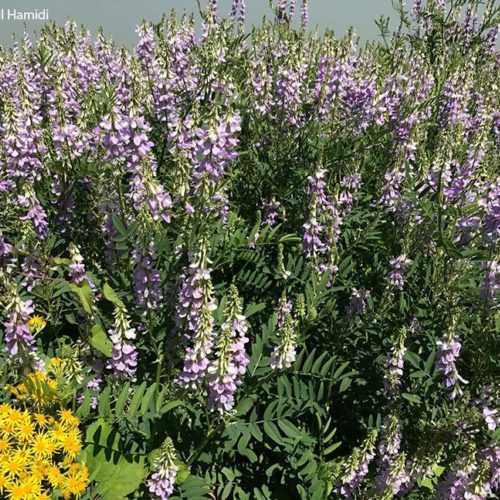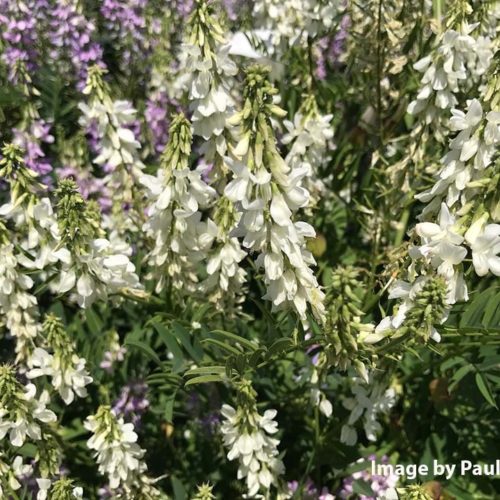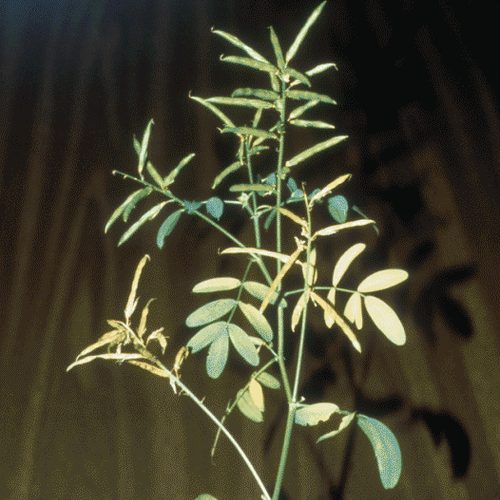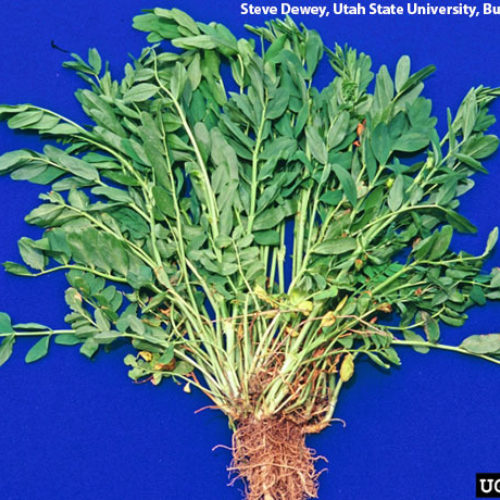Goatsrue
Galega officinalis

Family: Fabaceae
Other Common Names: professor weed
Weed class: A
Year Listed: 2000
Native to: Central and Southern Europe, Western Asia and Northern Africa
Is this Weed Toxic?:
humans, livestock
Legal listings:
This plant is also on the Washington State quarantine list. It is prohibited to transport, buy, sell, offer for sale, or distribute plants or plant parts of quarantined species into or within the state of Washington or to sell, offer for sale, or distribute seed packets of seed, flower seed blends, or wildflower mixes of quarantined species into or within the state of Washington. Please see WAC 16-752 for more information on the quarantine list. For questions about the quarantine list, contact the Washington State Department of Agriculture's Plant Services Program at (360) 902-1874 or email PlantServices@agr.wa.gov.
Why Is It a Noxious Weed?
Goatsrue is a federally listed noxious weed. It is capable of forming monocultures in wetland communities, displacing native and beneficial plants and destroying wildlife habitat. It is unpalatable and toxic to sheep. Goatsrue is fatal if ingested.
How would I identify it?
General Description
Goatsrue is an herbaceous perennial growing up to 6 feet tall with many stems from a vigorous crown and deep taproot. Leaves are alternate and compound on stems. Clusters of bluish lilac, reddish purple or white flowers develop pods with 8 seeds.
Flower Description
The flowers are pea-like and white to bluish lilac to reddish purple. They are found at the end of stems or in leaf axils.
Leaf description
The leaves are alternate and compound with a terminal leaflet and 6 to 10 pairs of leaflets. The tip of each leaflet has a small hair-like appendage.
Stem description
The stems are hollow, upright and branched.
Fruit Seed Description
Pods contain up to 9 mustard colored, oblong seeds. Each plant can produce 15,000 pods or more.
May Be Confused With
Goatsrue looks similar to species of vetch (Vicia genus), for example American vetch (Vicia americana) when not in flower. Vetch species have tendrils at leaf tips and stems that grow over and around other plants while goatsrue does not have tendrils and grows upright. Wild licorice (Glycyrrhiza lepidota), is a native plant that is similar in appearance to goatsrue. Wild licorice has solid stems while goatsrue are hollow, and wild licorice has seed pods covered in bristles and goatsrue seeds pods are not. If you need help with identification, county weed coordinator.
Where does it grow?
It grows in cropland, ditch banks, irrigation waterways, uncut pastures, fence lines, roadsides and wet marshy areas. Please click here to see a county level distribution map of goatsrue in Washington.
How Does it Reproduce?
Goatsrue reproduces by seed.
How Do I Control It?
General Control Strategy
An integrated approach using a combination of landowner education, crop rotation, tillage, mowing, digging, hand clipping for seed pod removal and chemicals are used to eradicate goatsrue.
Mechanical Control
Mowing is not recommended as a solitary control method as flowers and seeds can be produced on plants after multiple cuttings.
Cultural Control
Alternative cropping and row crops are effective as cultivation interrupts the life cycle of goatsrue.
Herbicide Control
Please refer to the PNW Weed Management Handbook, or contact your county noxious weed coordinator.
For More Information
See our Written Findings for more information about goatsrue (Galega officinalis).
King County NWCB Fact Sheet on goatsrue












